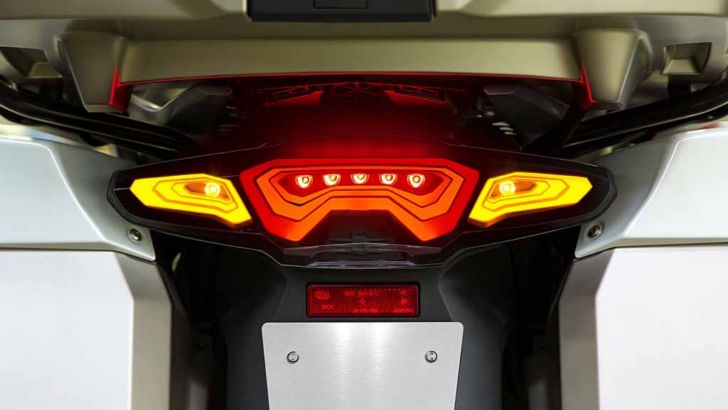After the initial announcement that BMW is developing a new type of OLED lighting modules for cars, it was only natural that a new press release introduced the same technology for the Bavarian two-wheelers.
Organic light-emitting diodes, or OLEDs, involve very thin layers of electroluminescent organic materials, making the whole technology sustainable, too. Even more OLED modules emit a very homogenous light which spreads across a larger area than what traditional LED counterparts can produce.
The OLED layers are extremely thin, in the 400 nanometer range, with 1 nanometer being a 1 millionth part of a millimeter. These layers are then encased in glass or plastic, while the manufacturing process allows the creation of spectacular shapes which are a most valuable complement to the new design.
At the same time, OLED modules are exceptionally energy-efficient and come with a very low generated heat, eliminating heatsinks which must otherwise be installed in order to keep temperatures in the ideal range. You can observe the aforementioned heatsinks in the recently-leaked sketch for the rumored new front cowl and headlights of the CBR1000RR.
BMW is already prototyping OLED light modules for several motorcycles, including the K1600GTL, pictured above. The OELD technology is still under development for the motorcycle and automotive industry, as there are still a lot of improvements needed in order to make all-OLED lighting viable, sustainable, safe and affordable.
“At present, the luminous density of the OLEDs is still insufficient and more development work is needed. While this is adequate at present for a rear light, lighting elements like the brake light or indicator need reinforcing. This is achieved through the use of additional conventional LEDs. However, these hybrid solutions permit a new visual language. The staggered arrangement of the almost completely freely configurable OLED elements creates a highly three-dimensional lighting effect that viewers find very attractive. On the other hand, the familiar conventional LEDs ensure sufficient luminous density,“ BMW adds.
The OLED layers are extremely thin, in the 400 nanometer range, with 1 nanometer being a 1 millionth part of a millimeter. These layers are then encased in glass or plastic, while the manufacturing process allows the creation of spectacular shapes which are a most valuable complement to the new design.
At the same time, OLED modules are exceptionally energy-efficient and come with a very low generated heat, eliminating heatsinks which must otherwise be installed in order to keep temperatures in the ideal range. You can observe the aforementioned heatsinks in the recently-leaked sketch for the rumored new front cowl and headlights of the CBR1000RR.
BMW is already prototyping OLED light modules for several motorcycles, including the K1600GTL, pictured above. The OELD technology is still under development for the motorcycle and automotive industry, as there are still a lot of improvements needed in order to make all-OLED lighting viable, sustainable, safe and affordable.
“At present, the luminous density of the OLEDs is still insufficient and more development work is needed. While this is adequate at present for a rear light, lighting elements like the brake light or indicator need reinforcing. This is achieved through the use of additional conventional LEDs. However, these hybrid solutions permit a new visual language. The staggered arrangement of the almost completely freely configurable OLED elements creates a highly three-dimensional lighting effect that viewers find very attractive. On the other hand, the familiar conventional LEDs ensure sufficient luminous density,“ BMW adds.



